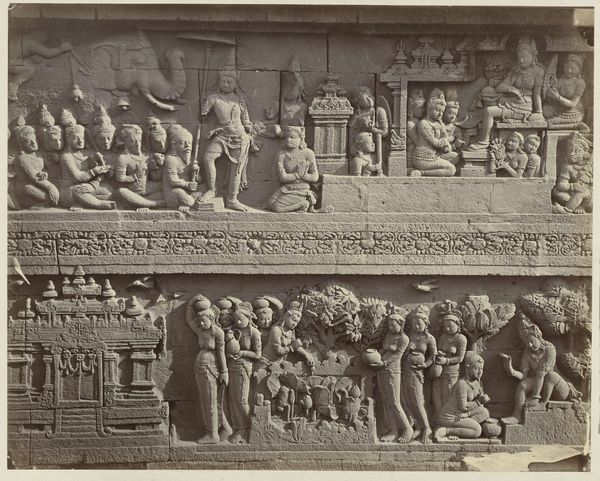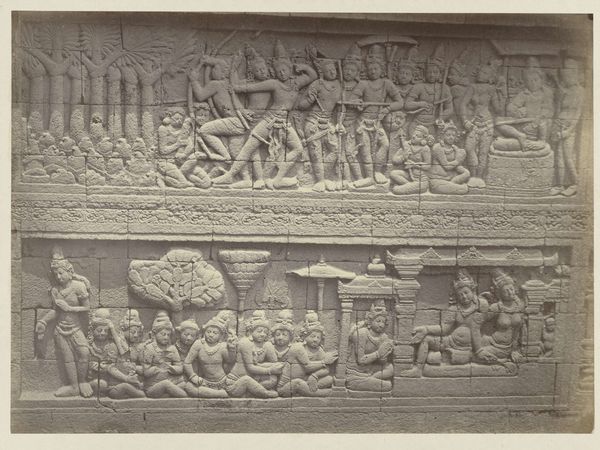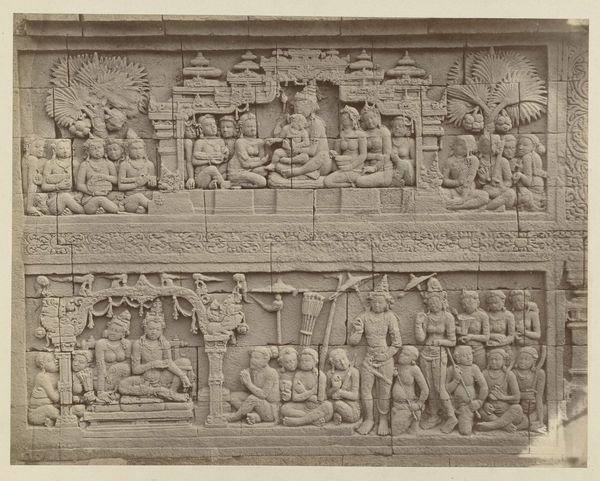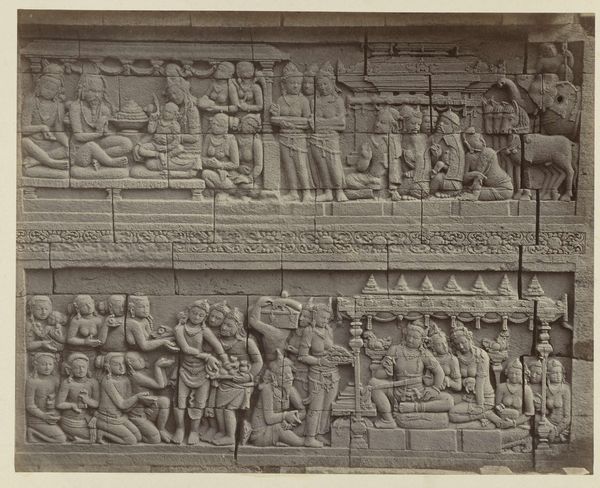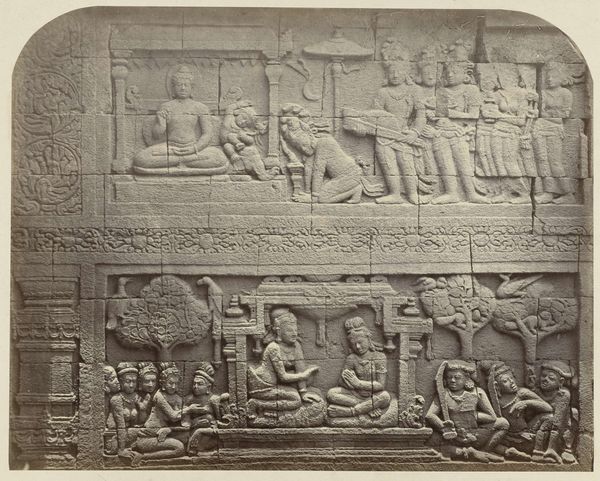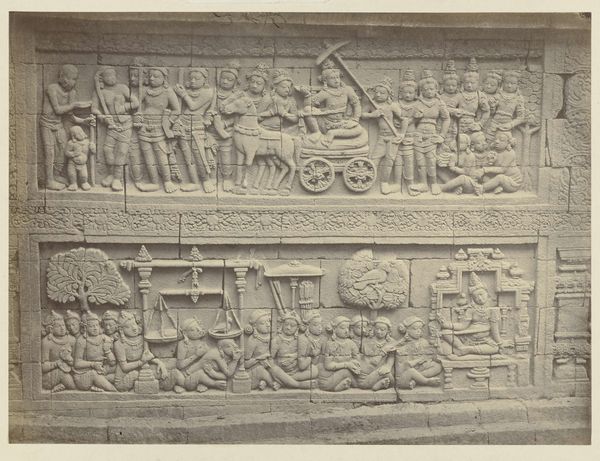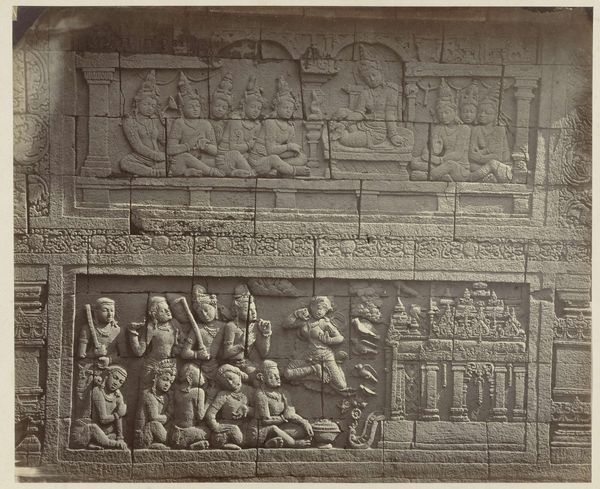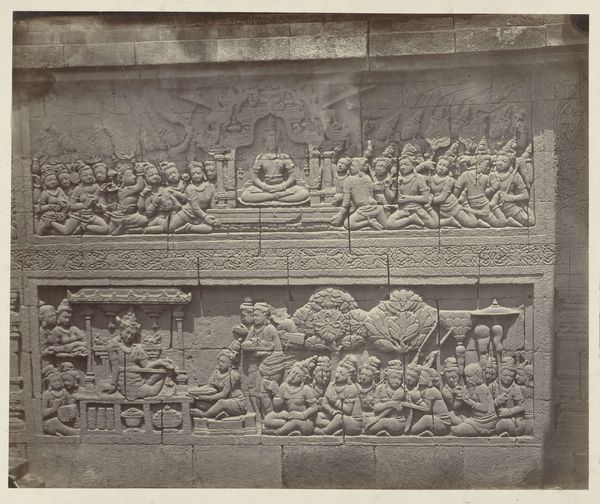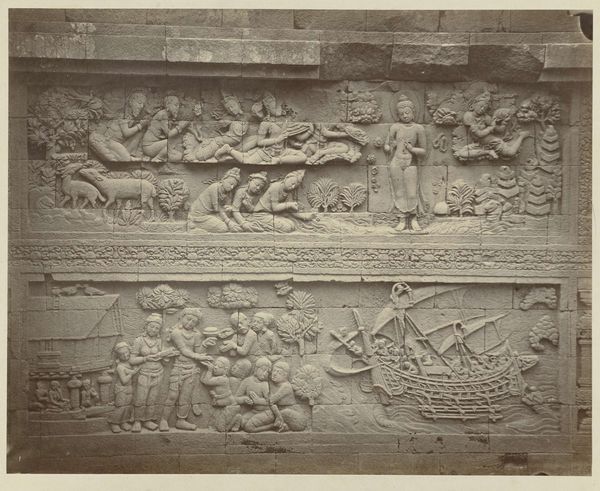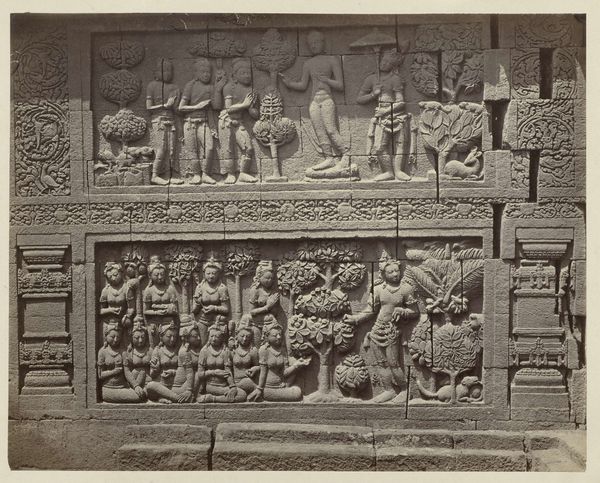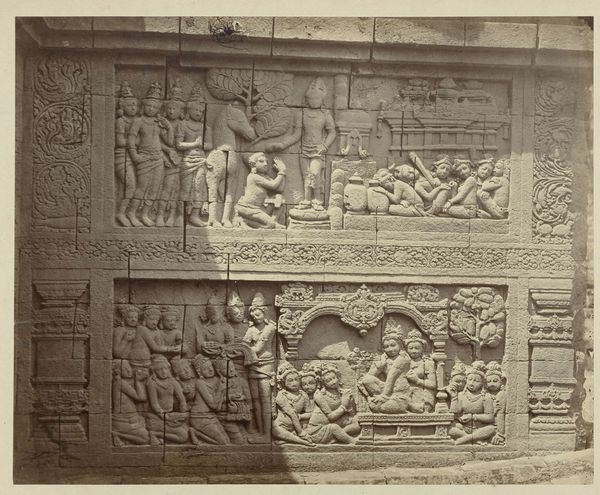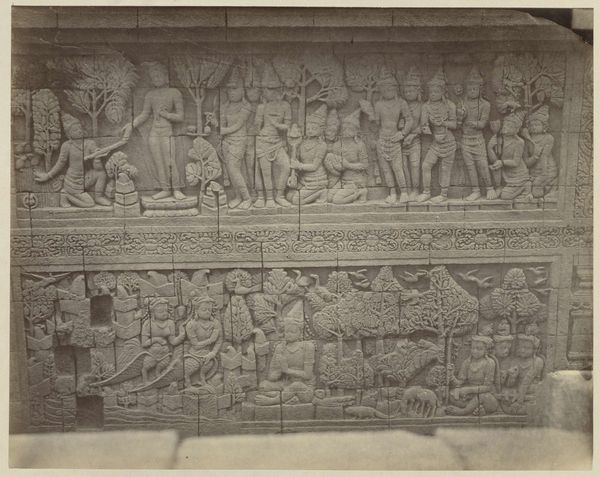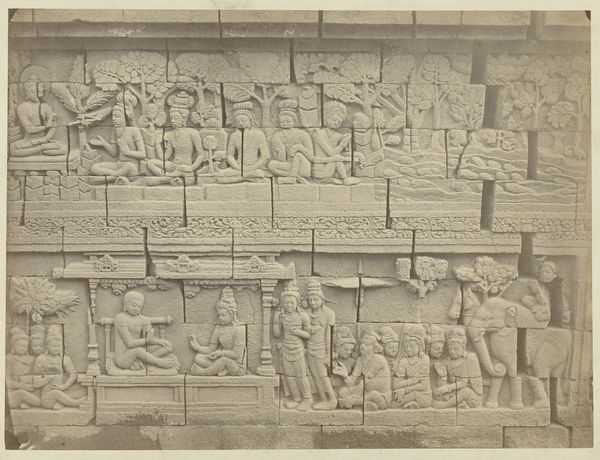
Basreliëf in de muur aan de oostzijde van de Borobudur Possibly 1873 - 1879
0:00
0:00
carving, sculpture
#
carving
#
narrative-art
#
asian-art
#
figuration
#
carved into stone
#
sculpture
Dimensions: height 300 mm, width 400 mm
Copyright: Rijks Museum: Open Domain
Editor: This is a photograph of a bas-relief from Borobudur, carved in stone, sometime between 1873 and 1879, by Isidore Kinsbergen. I’m immediately struck by how dense it is; so many figures all telling what seems to be one story. What do you see in this piece, especially in terms of its symbolic language? Curator: I see layers, quite literally. This isn’t just a carving, it's a record – a memory stone, if you will. Look at how the artist uses the repetition of figures to create a sense of continuity and shared experience. What emotions do those repeated figures evoke in you? Editor: They almost feel like…ancestors? Like witnesses across time. Is that intended? Curator: Perhaps. Remember that images are never neutral. The arrangement, the expressions, even the clothes they wear, convey information. Consider the raised platform where a regal figure sits; its positioning lends a hierarchical feel, yes? What cultural narratives might that reflect, about leadership or social order? Editor: It makes me think about Buddhist teachings, maybe stories of kings and enlightenment… or maybe both. But how much of that is me projecting, versus something inherent in the image itself? Curator: It’s both, I suspect. The power of the image resides in its ability to act as a mirror, reflecting cultural memories back to the viewer. The fact that it evokes these questions within you is a testament to the enduring power of symbolic imagery. Editor: So, it's a visual history lesson and a Rorschach test all at once? I hadn't thought of it that way. Curator: Precisely. And its creation signals an attempt to remember and transfer elements of cultural consciousness. What do you take away from our discussion? Editor: I realize I need to look closer, and to consider not only what's depicted, but *why* it's depicted that way and what echoes it creates. Thanks.
Comments
No comments
Be the first to comment and join the conversation on the ultimate creative platform.
